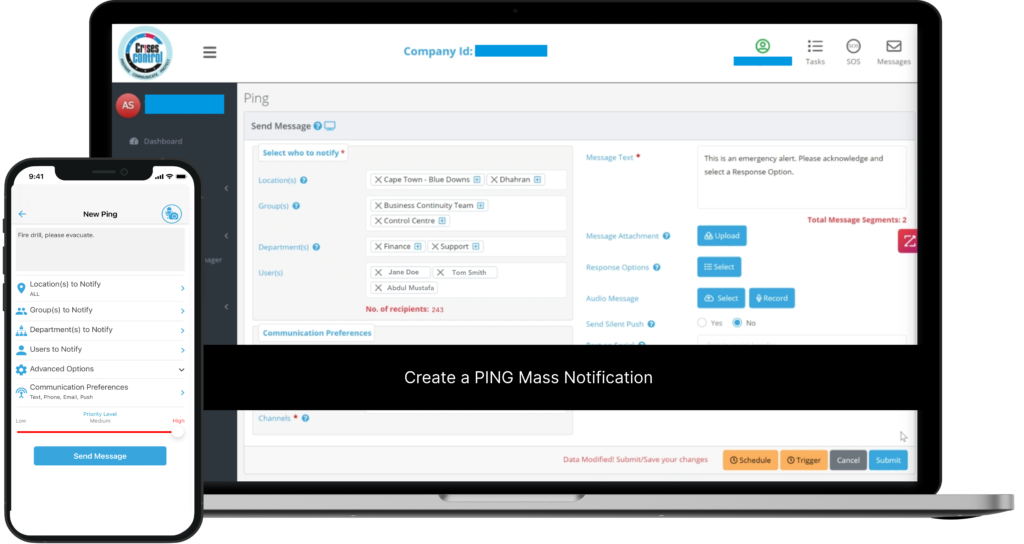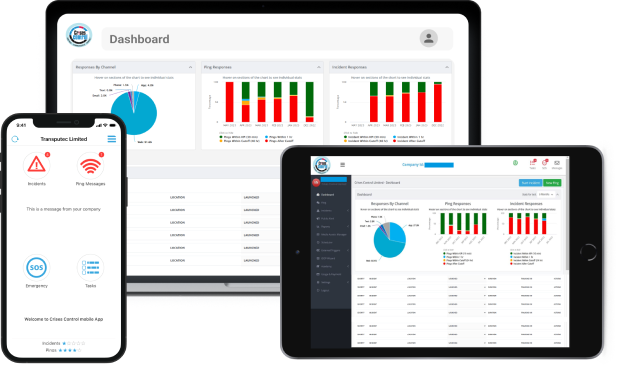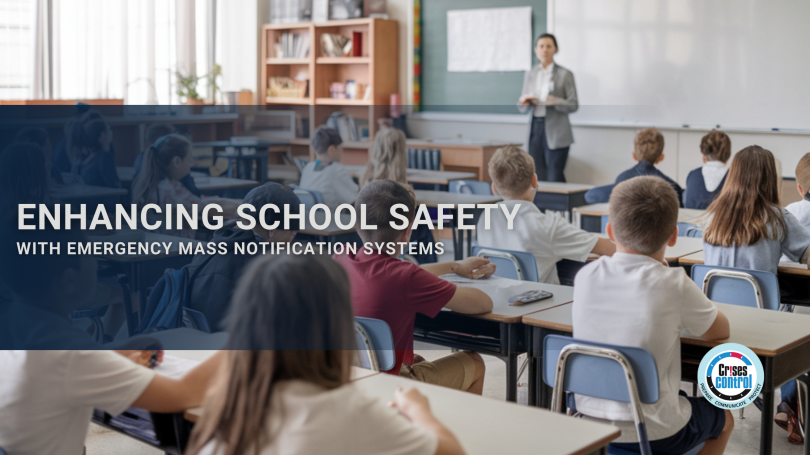Written by Ikram Tassi | Marketing
School emergencies are no longer a distant concern; they are real and happening more frequently. Whether it’s a weather disaster, a fire, or an active shooter situation, quick and efficient communication is critical to keeping students, staff, and the entire school community safe. In today’s world, traditional safety measures like fire drills and verbal alerts aren’t enough. Schools need technology that allows them to alert everyone in seconds and provide clear instructions on what to do next.
That’s where Emergency Mass Notification Systems (EMNS) come in. These systems allow schools to instantly send emergency alerts to all relevant parties—students, staff, parents, and emergency responders—no matter where they are or what device they’re using. By implementing these systems, schools can significantly reduce the risks associated with emergencies and ensure a coordinated response.
In this blog, we’ll explore the growing importance of Emergency Mass Notification Systems in schools, how they help in crisis situations, and how Crises Control can be your partner in enhancing school safety.
The Growing Need for Emergency Mass Notification Systems in Schools
The Frequency of School Emergencies
Schools face numerous emergencies each year, ranging from natural disasters to violent incidents. While these emergencies cannot always be predicted, the need for quick communication remains the same. Consider the following:
- Active Shooter Events: According to the National Centre for Education Statistics, there were 93 incidents of active shooters on school grounds between 2017 and 2021.
- Severe Weather: Schools in areas prone to severe weather events such as hurricanes, tornadoes, and floods must be prepared to alert students and staff about dangers immediately.
- Medical Emergencies: Whether it’s a student in need of urgent medical care or a staff member experiencing a medical emergency, having an immediate way to reach those who need help can be lifesaving.
While traditional systems like PA announcements or phone calls were once relied upon for emergency communication, these methods are no longer effective. They are slow, prone to failure, and often miss key groups of people. In critical moments, this delay can put lives at risk.
Challenges Schools Face in Crisis Management
During a crisis, schools often face several communication challenges:
- Slow Alerts: Traditional systems may not be fast enough to notify everyone, leading to confusion and disorganisation.
- Communication Breakdown: In larger schools, it can be difficult to get the message to everyone at the right time. Not all students or staff members will receive the same message at the same time.
- Unreliable Channels: In situations where phone lines are down or power is out, schools can struggle to get in touch with their community.
Emergency Mass Notification Systems are designed to solve these issues by enabling real-time communication across multiple channels, ensuring that everyone receives the alert at the same time and in the format they’re most likely to see.
How Emergency Mass Notification Systems Enhance School Safety
Instant Alerts, Immediate Action
The core function of an Emergency Mass Notification System is speed. In a crisis, seconds matter. Whether it’s an earthquake, a fire, or an intruder on campus, the system allows school administrators to send alerts to everyone involved instantly.
With Crises Control’s system, you can send alerts in real time to teachers, students, staff, parents, and emergency responders. These alerts can be delivered via multiple channels, including text messages, phone calls, emails, and mobile apps, making it more likely that the message will reach the right people. The speed and reach of these alerts are crucial in preventing harm and ensuring everyone is informed and can take appropriate action.
Multi-Channel Communication: Reaching Everyone, Everywhere
In a crisis, it’s essential to use more than one method of communication. Crises Control ensures that your messages reach everyone—regardless of location, device, or access to technology.
For instance, a parent may not be able to receive an alert via email, but might get it via text message. A teacher might see the alert through a mobile app, while emergency services get real-time updates via email. The system automatically uses all available channels to make sure no one is left out. Even when the internet or phone lines are down, Crises Control can switch to other methods like landlines, ensuring continued communication.
Geo-Targeting: Only Alerting the Right People
One size doesn’t fit all during a crisis. For example, during a fire drill, you don’t need to alert the entire district about a localised incident. Geo-targeting allows Crises Control’s system to send alerts only to the people in the affected areas. This could include specific buildings, floors, or even specific classrooms or outdoor areas.
By sending alerts based on location, you can ensure that only those who are directly affected by the emergency are notified. This reduces unnecessary panic and helps keep the message focused and clear.
Two-Way Communication: Keeping Everyone Informed
Effective crisis communication isn’t just about sending messages; it’s about maintaining an open line of communication. Crises Control allows for two-way communication, meaning that school staff can not only receive alerts, but also provide updates in real time.
Interested in our Ping Mass Communication Software?
Efficiently alert everyone in seconds at scale with our Mass Communication Software – PING, get the message out fast and ensure rapid response and recovery.

How Crises Control Can Help Your School Stay Safe
Streamlined Crisis Communication
Crises Control’s platform is designed for simplicity. School administrators can send alerts in seconds, even in the midst of high-stress situations. The system is easy to use, so there’s no need to worry about complicated technology when every second counts.
From sending mass notifications to creating custom alerts for specific groups or situations, Crises Control helps ensure that your communication is clear, immediate, and efficient.
Scalable for Schools of All Sizes
Whether you’re managing a small primary school or a large university campus, Crises Control is flexible enough to meet your needs. Our system can scale to fit your institution, ensuring that whether you have 100 students or 10,000, everyone is notified when it matters most.
Easy Integration with Existing Safety Systems
Many schools already use safety systems such as fire alarms, security cameras, and access control systems. Crises Control integrates seamlessly with these existing systems, so you don’t have to worry about overhauling your current infrastructure. This integration allows for a more coordinated response and a faster, more effective emergency plan.
Preparedness Through Training and Drills
At Crises Control, we believe in the power of preparedness. Our platform enables schools to run realistic drills, allowing staff and students to practice what to do in various emergency situations. Regular training ensures that everyone is familiar with the system and knows how to respond quickly and confidently when a crisis occurs.
Compliance and Data Security
We understand the importance of privacy and compliance. Crises Control complies with all relevant safety and data protection regulations, ensuring that sensitive information is kept secure. Your school’s safety system will meet the highest standards for security and data protection.
Real-Time Reporting for Continuous Improvement
After a crisis, it’s important to evaluate how well your communication plan worked. Crises Control provides detailed reports that allow you to analyse the effectiveness of your emergency alerts and identify areas for improvement. These reports are also useful for compliance and regulatory purposes.
Conclusion: Don’t Wait Until It’s Too Late – Act Now
The safety of students and staff should always be a priority, and in today’s unpredictable world, Emergency Mass Notification Systems are no longer optional—they’re essential. With Crises Control’s advanced technology, you can ensure that your school is prepared for any crisis, with a communication system that works in real time, across multiple channels, and with pinpoint accuracy.
By implementing Crises Control, you are taking a crucial step toward creating a safer environment for everyone in your school community. Whether it’s notifying staff during a fire drill or alerting parents during a severe weather warning, Crises Control makes sure that your school’s communication is swift, clear, and effective.
Ready to Enhance Your School’s Safety?
Don’t wait until the worst happens. Take control of your school’s safety today. Contact us to request a free demo of Crises Control and discover how our Emergency Mass Notification System can help protect your school community.
Request a FREE Demo

